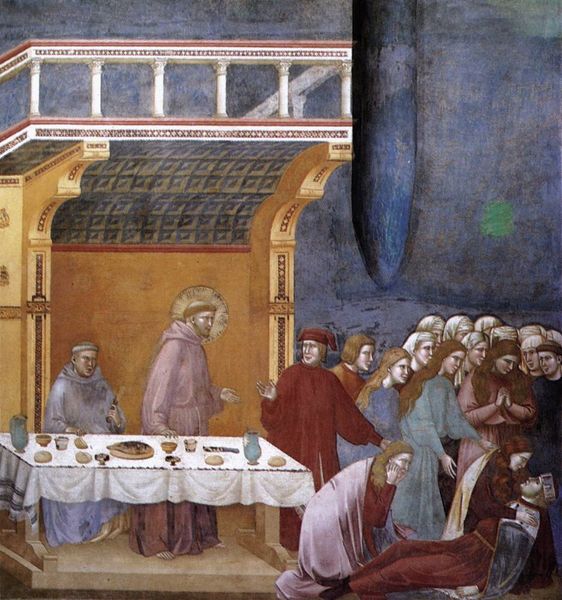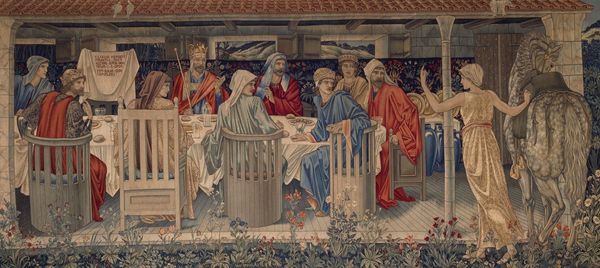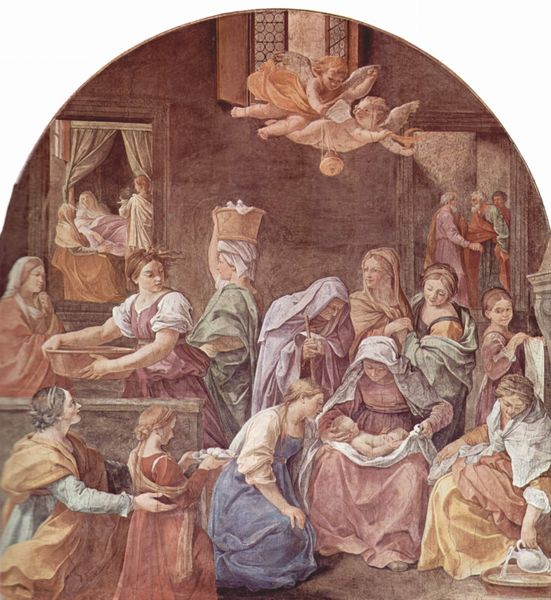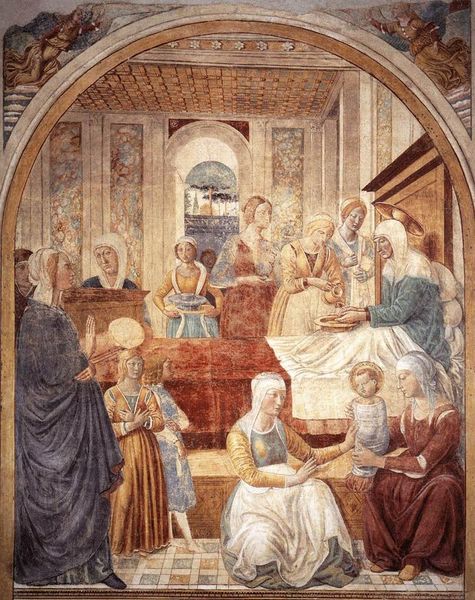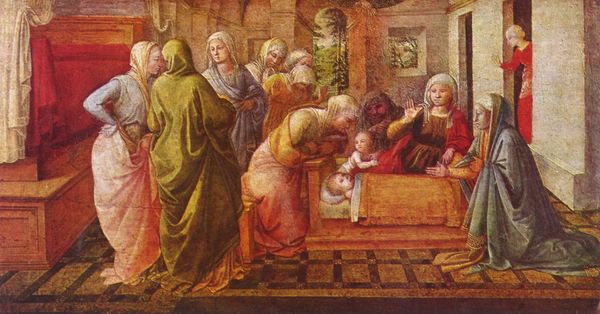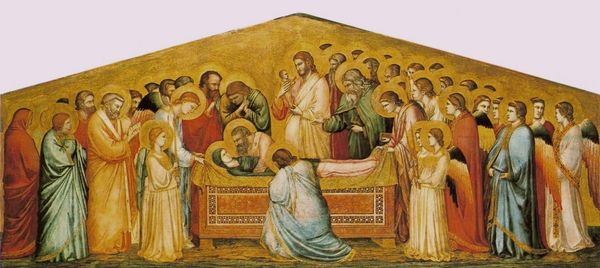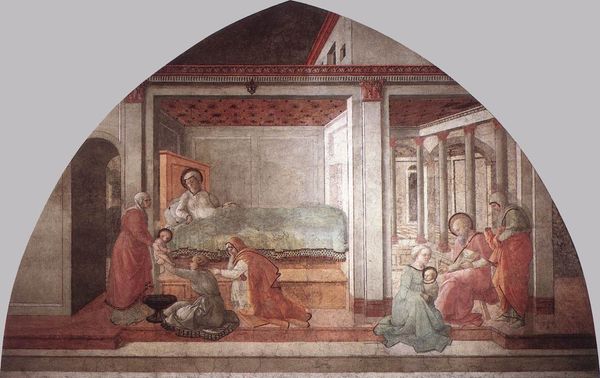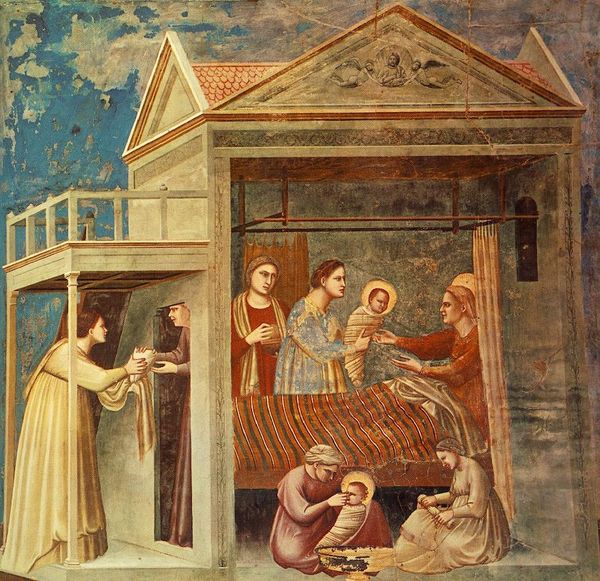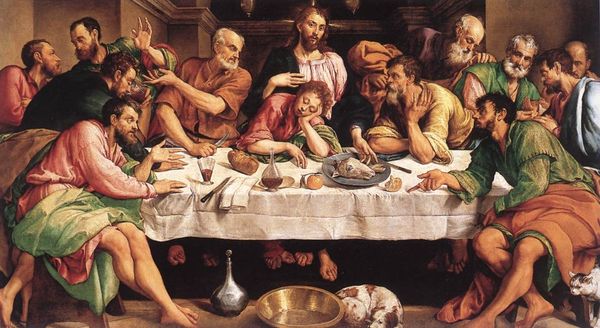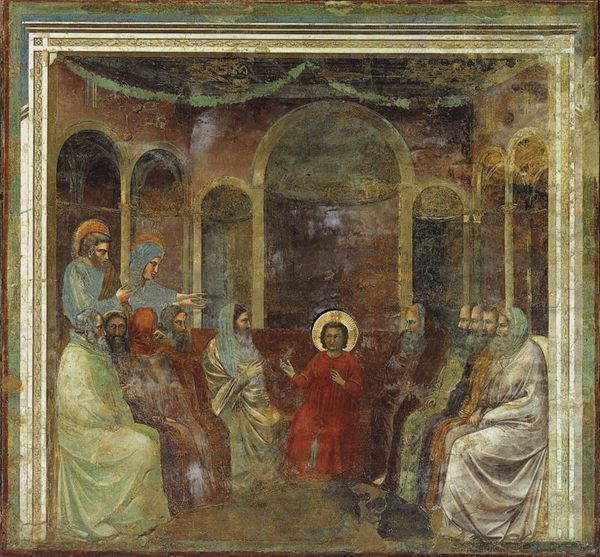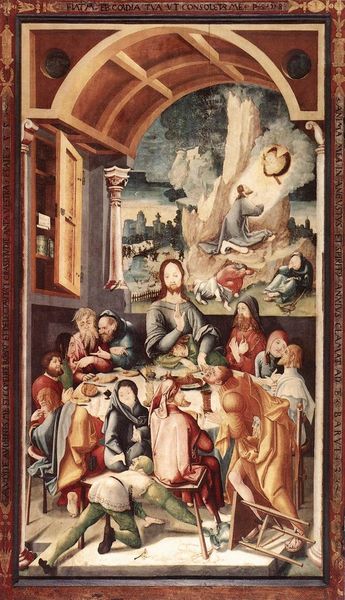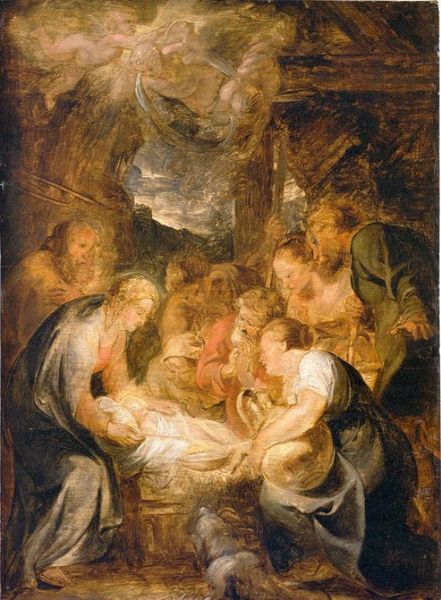
painting, fresco
#
medieval
#
narrative-art
#
painting
#
death
#
figuration
#
fresco
#
oil painting
#
christianity
#
history-painting
#
italian-renaissance
Dimensions: 220 x 304 cm
Copyright: Public domain
Curator: Here we have Benozzo Gozzoli’s fresco, "Death of the Knight of Celano," created around 1452. It’s a rather large piece. Editor: My immediate impression is a kind of melancholic stillness, almost a theatrical tableau. There's something haunting in the contrast between the lavish table setting and the profound grief displayed by the figures on the right. Curator: The fresco depicts a specific moment from the life of St. Francis. He predicted the death of the Knight of Celano, who apparently lived a life of avarice. The scene presents the stark intersection of spiritual judgment and worldly excess, highlighting power structures. Editor: Yes, I notice how food here serves as more than sustenance, its a symbolic offering or reminder. In the Middle Ages, the sharing of bread and wine carried sacred connotations. Note too the angel figure of death and his shadow over the dinner table and the doomed knight, with allusions to the Last Supper as a prediction. How does the composition add to the spiritual interpretation? Curator: Look at the groupings. The friars around Francis display solemn understanding, but the knight's companions are in utter disarray. We see rigid social expectations confronted by the inescapable levelling force of mortality, almost in anticipation of queer and death studies. It’s fascinating how Gozzoli stages the scene to reflect societal anxieties around morality and fate, framing these individuals within a moment of profound transition. Editor: The colours contribute heavily, I think. There's a certain muted quality, creating a sense of distance, as if observing a scene from a faded memory or a cautionary tale passed down through generations. The expressions are stylized, perhaps, but each face clearly portrays individualized grief and recognition. And yet Saint Francis' halo looks surprisingly new; his figure is clear from death. Curator: Indeed, and understanding the painting demands more than just analyzing aesthetic features. Gozzoli's work reflects specific contemporary socio-political issues that impact representations of power, religion, and morality, ideas constantly evolving for all marginalized communities. Editor: The details tell a compelling narrative. Seeing it, one thinks on our relationship to mortality and spiritual meaning that painting is an important time capsule of faith and ritual. Thank you. Curator: And thank you; understanding our shared past shapes our present struggle for equitable existence.
Comments
No comments
Be the first to comment and join the conversation on the ultimate creative platform.
